With the World Cup under way, mention has inevitably been made of England’s years of disappointment since the famous June day in 1966, when Geoff Hurst’s hat-trick helped earn a dramatic 4-2 victory over West Germany in the Wembley final, and the nation’s football future seemed so bright.
Motorcyclists had plenty to be pleased about that summer too, especially those lucky enough to be riding Royal Enfield’s recently launched Continental GT – and not just because its red paintwork matched England’s World Cup Final shirts. The GT was a lively 250cc, single-cylinder sports machine with a fly-screen, low clip-on handlebars and a racer-like humped seat.

The tester from Motor Cycle magazine had enthused that “…this is undoubtedly the finest two-fifty that Royal Enfield has ever made, one which can be enjoyed every mile of the way. It is sweet-natured and accommodating – built to go and built to stop. The factory are entitled to be proud of it.”
Proud those Royal Enfield employees doubtless were in that summer of ’66, but their optimism must have faded even faster than that of England’s football fans. Although the Continental GT was popular, Enfield was struggling financially, and the following year ceased production of its single-cylinder models and sold off the factory at Redditch, near Birmingham, where they had been built.
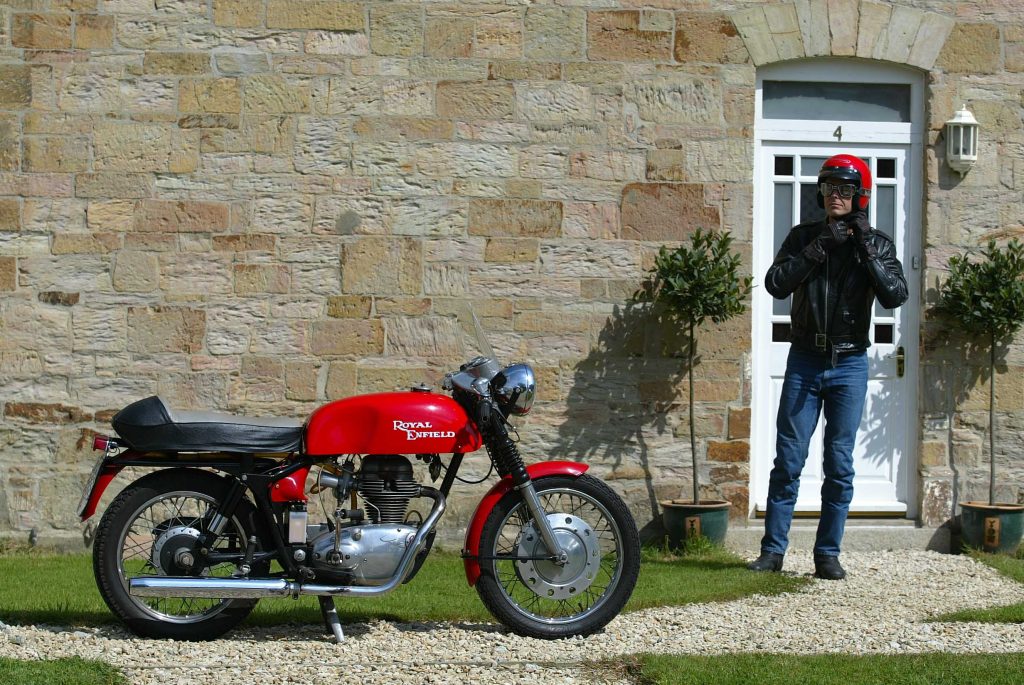
These were troubled times for the British motorcycle industry, but Enfield’s decision was harsh on the firm’s management. The Continental GT was imaginative, cleverly conceived and thoughtfully developed – a rare example of a manufacturer getting a model right from the word go.
Its origins dated back to 1956 and a 250cc single called the Crusader, which had subsequently been updated several times. In 1959 the Crusader Sports had appeared with a tuned engine that gave a little more speed; three years later the Super 5 had introduced the five-speed gearbox after which it was named.
For 1963, Enfield had released the Continental, which combined a slightly tuned version of the same engine with revised styling that included a flyscreen, curiously shaped “jelly-mould” fuel tank, dropped handlebars and exposed rear shock springs. The model was a success but many of the young riders it attracted modified it with café-racing features including clip-on bars, big fibreglass petrol tanks and racing seats.
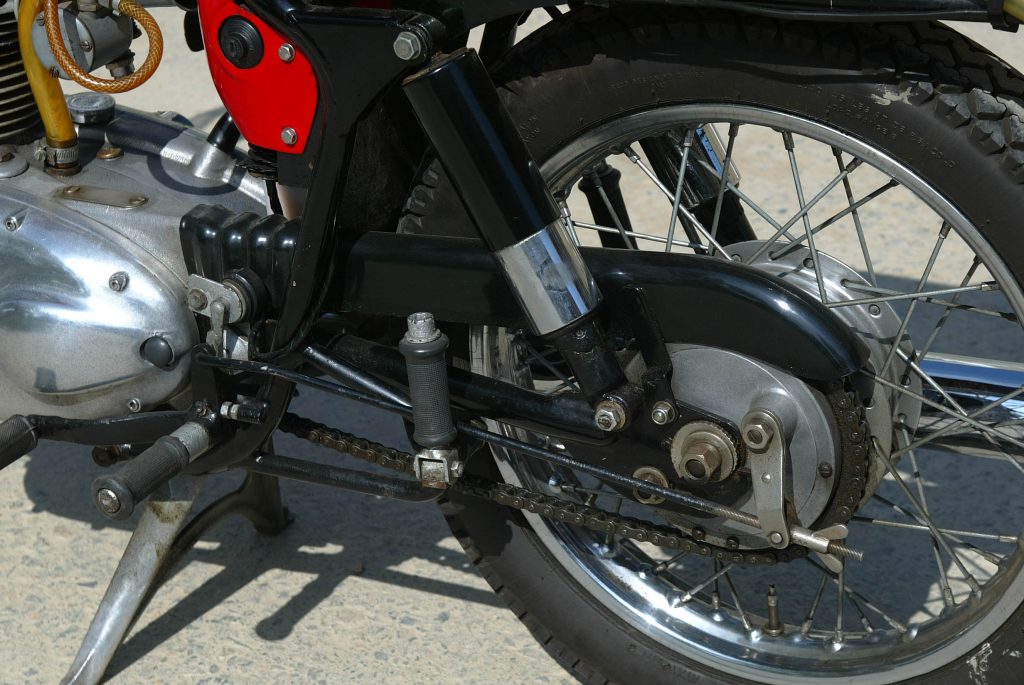
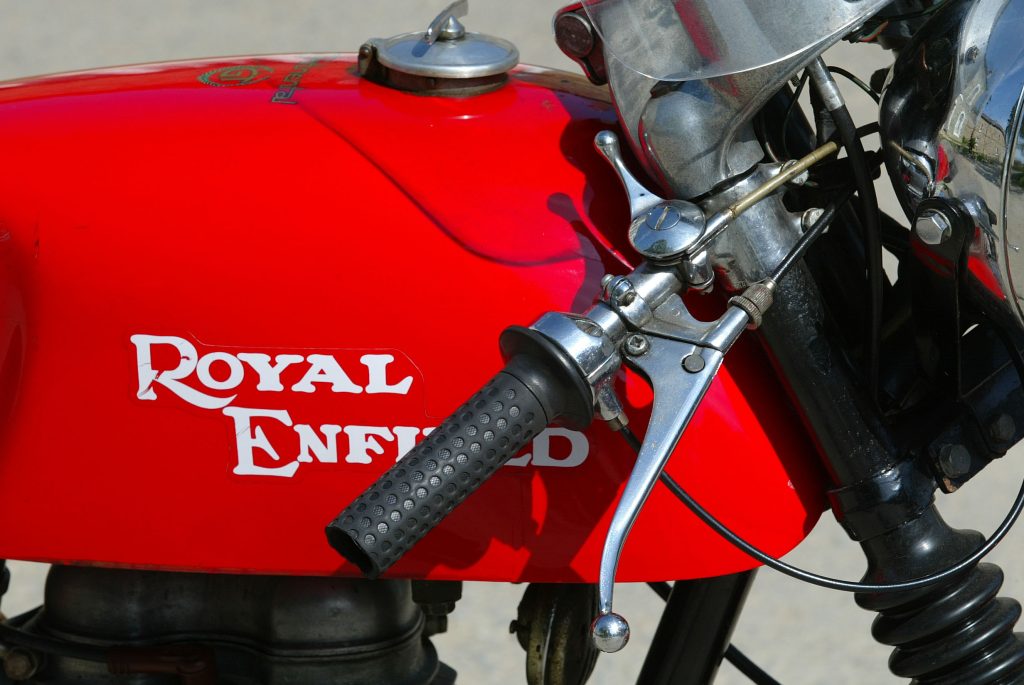
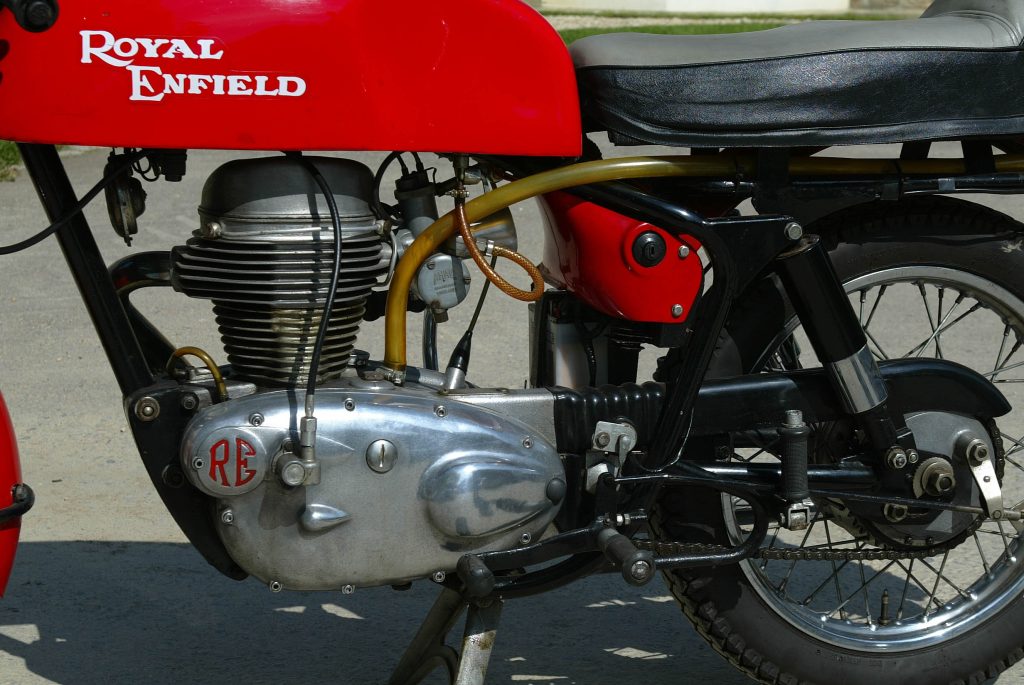
These were bought from specialist accessory firms such as Deeprose Brothers of Catford in south London, or rivals Gander and Grey. Enfield boss Leo Davenport, a former TT-winning racer, saw the potential for the factory itself to provide these tuning parts – standard practice these days, but not 60 years ago.
Davenport was a visionary who in today’s world would quite likely have used social media for inspiration in suggesting features and specification for a new model. As it was, he took the imaginative step of contacting selected Enfield dealers, and especially their young apprentices who were closer in age to likely customers for such a bike, to request help.
The feedback was passed to Enfield draughtsman Reg Thomas, and the Continental GT was the attractive result. Its main styling feature was the long red 16-litre tank, which was made of fibreglass, then still legal for fuel carrying. The big perforated dummy cooling rims of polished alloy attached to the seven-inch front brake drum were equally dramatic.
Other neat details, appreciated by performance-hungry enthusiasts including the learners who could ride a bike of up to 250cc capacity, included the flyscreen, black plastic fork gaiters, humped dual seat, clip-on bars with chromed ball-end control levers, a chromed headlamp containing an ammeter, and a neat alloy fork-top panel holding a matching speedometer and rev-counter.
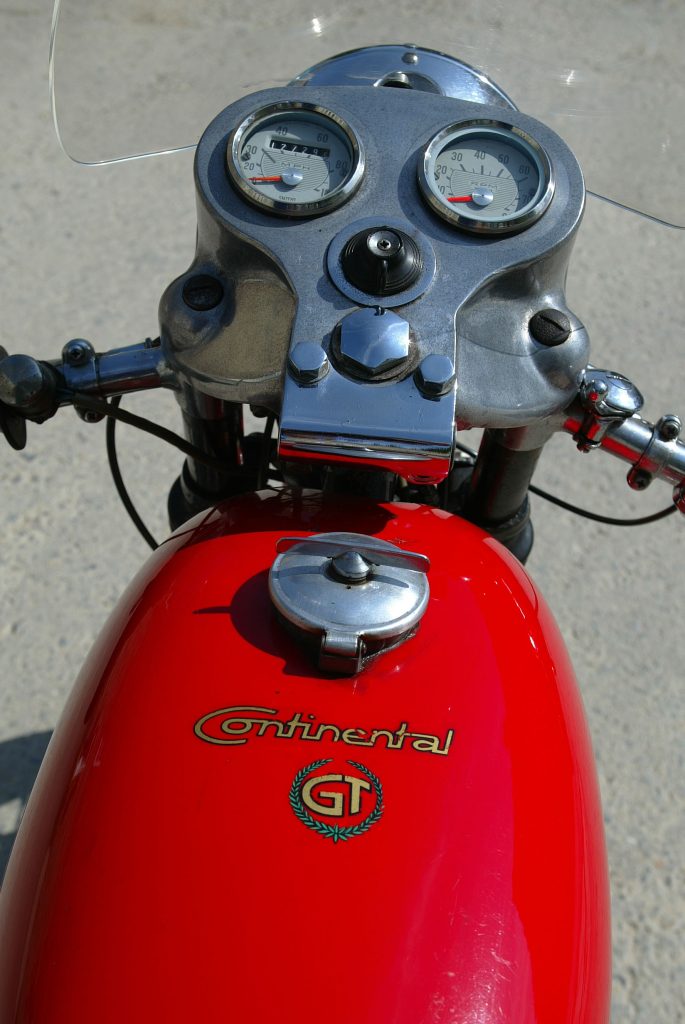
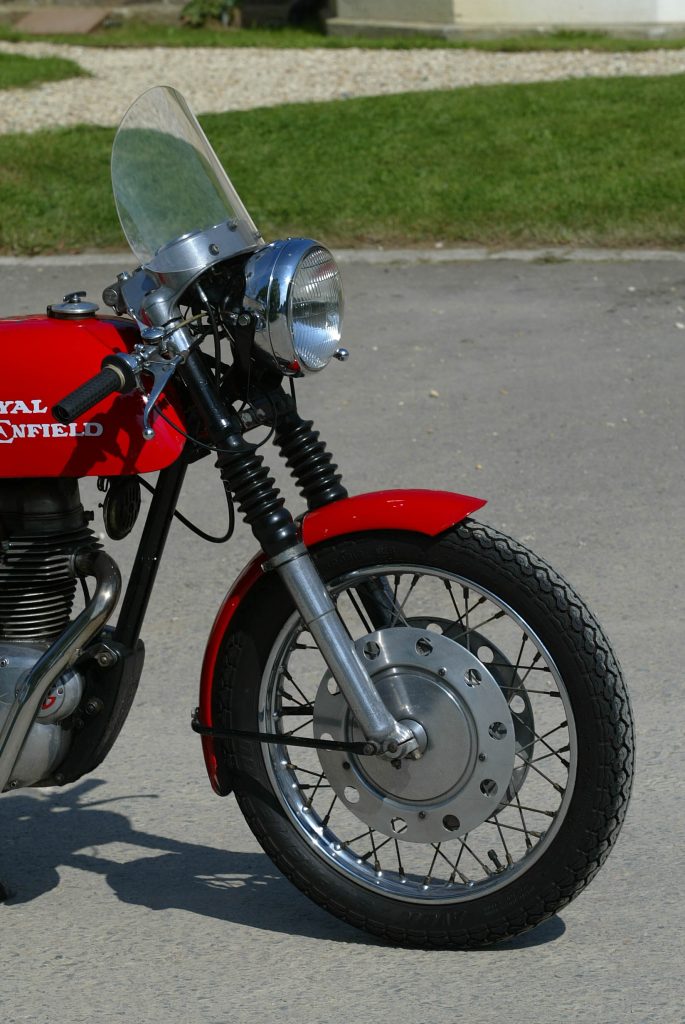
The engine had been uprated slightly, too. Increased compression ratio, lighter valves, larger Amal carburettor with open bellmouth, and a new swept-back exhaust system with seamless cylindrical silencer all helped raise peak output slightly to 21bhp at 7500rpm.
That was still a modest maximum but the Continental GT was respectably quick and very fun to ride – and that remains true decades later, especially of a well preserved example like this one. The little Enfield usually started easily with a gentle nudge of the left-sided kick-starter, though it sometimes needed several attempts when the engine was hot.
Straight-line performance was lively for an elderly 250cc single, helped by the bike’s light weight of just 135kg. The GT’s aircooled motor was in a reasonably high state of tune, and had to be used hard for maximum effect. That meant revving towards the 7500rpm peak power figure through the gears; thankfully the single-pot unit stayed sufficiently smooth to make this a pleasure rather than a pain.
Cruising at 60mph-plus was reasonably relaxed, thanks to the GT’s combination of low handlebars, near-vertical flyscreen and lack of vibration. I saw an indicated 71mph, and could have ridden faster. In the Sixties the Enfield was speed-tested at 85mph, impressive for a learner-legal bike.
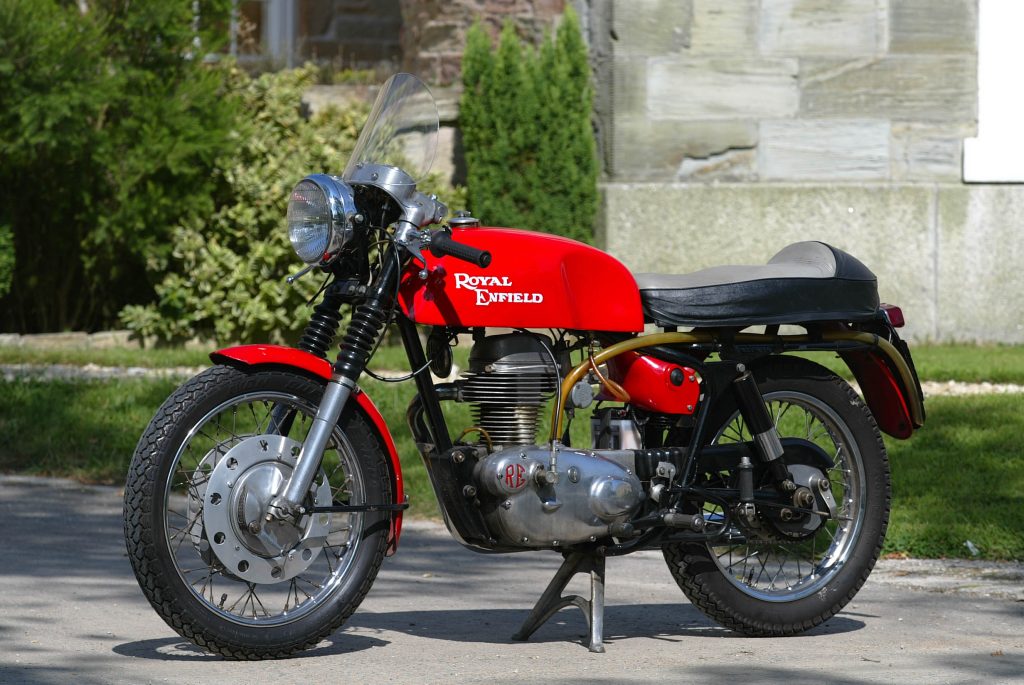
Back then, the GT’s one real flaw was its five-speed gearbox, which had been poorly developed from the original four-speed box, and was prone to hitting false neutrals. This bike had been fitted with the earlier four-speed box, which gave a rather tall first, and required plenty of revving before a change to avoid losing momentum. Not ideal, but better than a boxful of unwanted neutrals.
The handling was very good, again aided by the Enfield’s light weight, and also by its simple and reasonably soft, but fairly well damped suspension. “Maybe it’s sticking one’s neck out to describe the navigation as faultless, but any doubters should try a GT for themselves,” enthused the tester from Motor Cycle in his March 1966 issue review.
Although the front brake was less powerful than its big dummy cooling fins suggested, the vented 190mm single-leading-shoe drum provided plenty of stopping ability, aided by the smaller but fairly responsive rear drum. The narrow Avon tyres gave sufficient grip for enthusiastic cornering, occasionally with a scritch as the centre stand grounded.
The GT was a responsive, stable bike that encouraged hard riding, and must have been hugely entertaining for its youthful owners in its heyday. Despite facing some rapid two-strokes from the emerging Japanese manufacturers, notably Suzuki, it was also briefly successful in production racing.
But its time in the spotlight was brief. In early 1967, after just over 1700 units had been sold, came dramatic news. The financiers who had taken control of Royal Enfield had decided that the firm was worth less than its Redditch site, so had abandoned motorcycle manufacture and sold the land for use as an industrial estate.
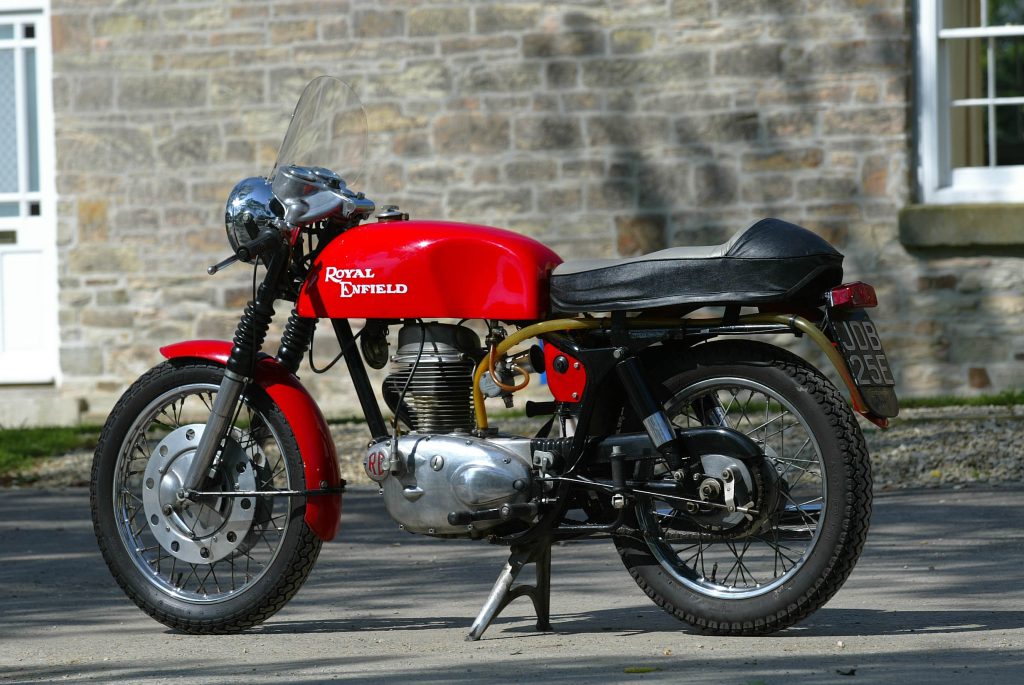
Production of the twin-cylinder Interceptor continued for a while in an underground factory at nearby Bradford-on-Avon in Wiltshire, before finally ending in 1970. But there was no future for the little red sports 250 that had captured the imagination of so many riders.
The Continental GT story does however have a happy ending. In the Sixties, Royal Enfield production continued in India, where bikes had originally been built under licence. The firm grew to become hugely successful, and began exporting its updated Bullet single to Britain and elsewhere.
And in 2013, the still thriving Enfield, keen to broaden its appeal, introduced a new sports model – a stylish café racer called the Continental GT, featuring clip-on bars, a humped seat and bright red paintwork. It was a hit and the firm has since launched new parallel twin models, becoming a star of the industry.
Meanwhile, more than 56 years of hurt after that famous June day in 1966, England’s attempt to win another World Cup continues…
1966 Royal Enfield Continental GT
You’ll love: Looks, liveliness and light weight
You’ll curse: Probably the gearbox gremlins
Buy it because: It’s Sixties café racing on the cheap
Condition and price range: Project: £3000 Nice ride: £4000 Showing off: £5000
Engine: Aircooled single
Capacity: 248cc
Maximum power: 21bhp @ 7,500rpm
Weight: 135kg without fluids
Top speed: 85mph
Read more
Kawasaki’s KR-1 was a fickle failure… but fantastic fun
The Young Ones: The baby-faced bikers turning to classics
Super by name, Super by nature: 64 years on, the Honda Cub still raises a smile










Bought one new in 66 from deeprose catford
Great first bike
I bought mine, secondhand in 1972 from Stan Knowles in York. I still have the bike albeit in bits following an engine rebuild by Gander and Gray, and propose securing absent parts etc in the new year for a modest priced restoration.
Oil leaks, dodgy gearbox, totally outclassed by CB72, Suzuki super six, Yamaha YDS5, Ducati mach 1….. Nice looker…. but no cigar.
Agree with Kevin Smith – great first bike. Also bought mine new from Andrews in Belfast in 1969 and still have the original sales pamphlet which I drooled over while plucking up the courage to commit. It must have been one of the last and as far as I remember the engine number was GT18476 with possibly DE on the end. Mine didn’t succumb to any of the bad things referred to in close to 45,000 miles of all weather riding including the 5 speed gearbox which never gave any problems and no false neutrals! Minor oil weep from the head gasket when it needed changing. Cheap to run ( 90 mpg ) ideal on a small income and easy to service which I did regularly which is possibly why it only let me down once with a broken clutch cable. Top speed – I once saw the needle nudge 95 mph
on a downhill section of motorway and I’m not given to exaggeration or rose tinted glasses!
( was that legal back then? ). I had the same fairing fitted as the gannet but I got it directly from Veloce Ltd., Hall Green, Birmingham. Also had a race style seat and megaphone ‘silencer’ fitted. It served me well and obviously I loved it. After moving on to a T120 Bonneville I restored the Enfield and a few years later sold it to a collector. That was in 1979 so possibly still in good condition somewhere. Reg. No. AOI 3814 – if I’d realised how few were made I might have kept it. Nothing else at the time had the style or the sound – beautiful.
Possessed one Continental GT 535cc, built 2016. Love it.
I was 16 in 1967 and I had been wanting an Enfield GT since I first saw one I my local dealers, came the great day I was 16 down to the with wedg in my walk up to the counter and said I would like to a Royal Enfield Continental GT 250, the guy without even lifting his said so would lots of others but Enfield have closed up shop, I ended up with a BSA Star Fire, now at the age of 72 I have been given a GT in three tea chest, so I got one in the end.
My buddy had new one in’66. LLM 554D.
I wanted one but ended up £20 tiger cub as no dosh in those days. Waited 50 years!
Now got 2 one as new and another waiting for TLC